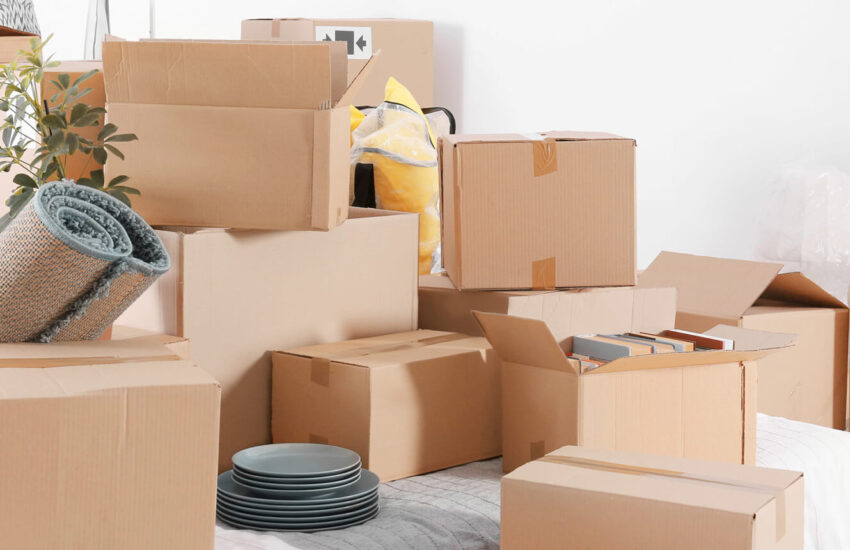When moving, even with some experience, you have to think about all the different details involved. Some things will always be the same whether your move is from city to city, across the country, or town. Packing and unpacking are an inevitable part of the moving process, but that doesn’t mean that you can’t make the process more efficient and effective with some helpful packing tips!
- Packing and Protecting Beddings and Linen
When packing beddings and linen items like sheets, pillowcases, and duvet covers, some extra preparation and finding a suitable packaging material is crucial to making a hassle-free move. Look for large moving boxes and line them with packing paper. Remember that even these items are vulnerable to pests and moisture, so make sure to place protective layers around the inside of your box before adding your linens. You may also want to use sealed plastic containers or bags if you don’t have enough room in your container.
Maximize space by pressing down your beddings as you pack to release air and create more space. However, do not overpack your linen to avoid bulging and create a tight seal space. For more creative packing options like vacuum storage bags, you can contact Sandhills Moving and Storage Company and benefit from their professional packing services, competitive pricing, and fast delivery times.
- Packing Your Kitchen and Pantry
Pack your kitchen and pantry items in sturdy boxes and line the bottom with a paper pad. Make sure you pack similar items together. For example, if you are packing canned and dry goods separately, it would make sense to put one type of canned goods in one box and a different kind of canned goods in another. When packing glass jars or bottles, make sure you use plenty of paper to fill any space and wrap them tightly in bubble wrap before putting them into a box.
Pack the heaviest box on the bottom of a stack so they don’t move around during transit. Label all containers that might have food residue inside as fragile. Keep these containers out of reach from children or pets who might not understand why this is important to do so. It’s also crucial to separate layers with crushed paper for maximum protection of fragile items.
- Packing Electronics
Pack your electronics in a separate box, so they don’t get mixed up with fragile items. Be careful not to pack cords and chargers together, as these can easily tangle together and break. Pack the cables, connectors, and chargers in a bag or wrap each separately to keep them from tangling. Original boxes are great for packing delicate items because they’re sturdy and often come with lids that keep dust out.
However, if you do not have the original boxes, you can get special cartons from your mover that will work just as well. When packing a TV, always keep it upright and use foam wrap to protect the screen and other sensitive parts of the device. Also, check your TV’s manual to find instructions on how best to pack it for transport. You may also want to take pictures and notes to help reassemble all your electronic components when you arrive at your new home. Remember to seal your boxes tightly with good packing tape.
- Make Good Use of Wardrobe Boxes
You’re probably wondering where you will store all your clothes if you don’t want to use boxes. The answer is wardrobe boxes! These things are a lifesaver. Their design is suitable for holding most of your clothing, and they come in many different sizes, so you’ll be able to fit pretty much anything inside. Your beddings and linen will fit nicely in wardrobe boxes without getting squished or creased as long as they’re stacked neatly inside one another. Hang them in the wardrobe box using padded hangers on the top rack, and remember to label each box with what’s inside; before sealing it
A wardrobe box is suitable for items you do not want to fold up and put in a drawer, such as suits, dresses, skirts, expensive curtains, and draperies. They also work well for delicate clothes like blouses and sweaters, which might get ruined by packing them tightly into a container. Lastly, you can pack shoes inside wardrobe boxes because there’s plenty of room for them – perfect for people who are moving out of their homes and have no more space left on their shoe rack.
- Packing Books
Books are heavy and delicate. Hence it is best to pack them separately in sturdy medium-sized boxes. A container that can protect against moisture and pests like ants, termites, and silverfish can be a good idea. One way of packing books is by stacking them one on top of the other into a box with ample cushioning material on all six sides. Pack books tightly together so they don’t move around during transit.
Place each layer of books so that it faces down with book spines facing up towards you so they won’t get scratched while moving around during transit. However, collector’s and expensive books require maximum protection, so you may need to pack them in a separate box. You can also divide your books into sizes, fiction, nonfiction, cookbooks, children’s books, etc. You could use plastic wrap or cellophane paper to wrap smaller stacks of paperbacks individually before placing them inside larger cartons containing other types of books. Remember to label these boxes clearly.
Conclusion
When packing up your belongings to move to a new home or apartment, it’s essential to take care of your items with proper packing using suitable containers and other materials. The last thing you want is expensive kitchenware or appliances to suffer damages in transport because of poor packaging. Using original packing boxes for electronics or special containers is always a good idea. Wardrobe boxes are great for clothing, shoes, and delicate items that are difficult to pack without breaking. Always keep clothes wrinkle-free by rolling them into towels before placing them into wardrobe boxes. Remember that padding, appropriate labeling, and tight sealing are crucial.



